#Creation of the World
Explore tagged Tumblr posts
Text
Although the binding has seen better days, the content is beautiful! You can't miss the large illuminated initial, and if you look carefully as we page through you may see faces, hands, or even animals in the forms of the initials. The ascenders are impressive, too! The manuscript is LJS 264, is a summary of all knowledge, divided into 3 parts on the creation of the world and man, geography, and astronomy; copy of the earliest recension in 6,600 octosyllabic lines of verse, as composed in 1245 by Gautier of Metz. It was copied in France, ca. 1400.
🔗:
#medieval#manuscript#15th century#france#history#creation of the world#illustration#illumination#book history#rare books
120 notes
·
View notes
Text
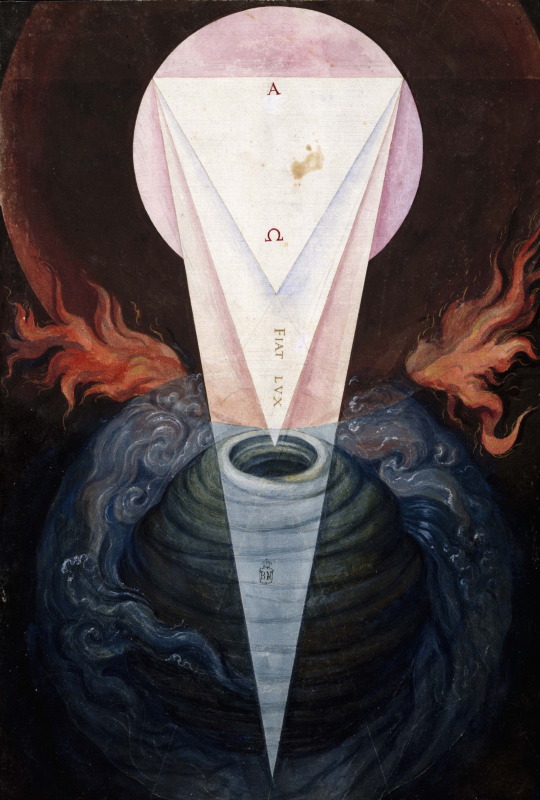
The First day of Creation Francisco de Holanda (1517-1584), ‘De aetatibus mundi imagines’ Via: https://commons.wikimedia.org/wiki/File:Francisco_de_Holanda,_The_First_day_of_Creation.jpg
12 notes
·
View notes
Text
Maria Korolenok Марыя Каралёнак

Maria Korolenok Марыя Каралёнак, “Creation of the World Сотворение мира”, music by Andrey Petrov Андрей Петров, libretto, choreo and staging by Valentin Elizariev Валентин Елизарьев, design by Eugene Lysik Евгений Лысик. Performance in Honor of Andrey Petrov Андрей Петров, Bolshoi Theatre of Belarus Большой театр Беларуси, Opierny Teatr Opera and Ballet Theatre, Minsk, Republic of Belarus.
Source and more info at: Photographer Pawel Suschtschönok on Threads Photographer Pawel Suschtschönok on You Tube Photographer Pawel Suschtschönok on Facebook Photographer Pawel Suschtschönok on Instagram Photographer Pawel Suschtschönok on VKontakte
Note I: This blog is open to receiving and considering any suggestions, contributions, and/or criticisms that may help correct mistakes or improve its content. Comments are available to any visitor.
Note II: Original quality of photographs might be affected by compression algorithm of the website where they are hosted.
#Andrey Petrov Андрей Петров#Bailarina#Balerina#Balerino#Balet#Ballerina#Ballerino#Ballet#Ballett#Balletto#Bolshoi Theatre of Belarus Большой театр Беларуси#Creation of the World#Dance#Dancer#Dans#Danse#Dansen#DANZA#Балерина#Балет#Сотворение мира#Танец#Танцор#Eugene Lysik Евгений Лысик#Eve#Maria Korolenok Марыя Каралёнак#Opierny Teatr Opera and Ballet Theatre#Pawel Suschtschönok Павел Сущёнок#Russian Ballet#Tänzer
2 notes
·
View notes
Text
Look at you, you're gorgeous!

#good omens#crowley#aziraphale#crowley fanart#aziraphale fanart#good omens fanart#ineffable husbands#angel crowley#creation of the world
27 notes
·
View notes
Text
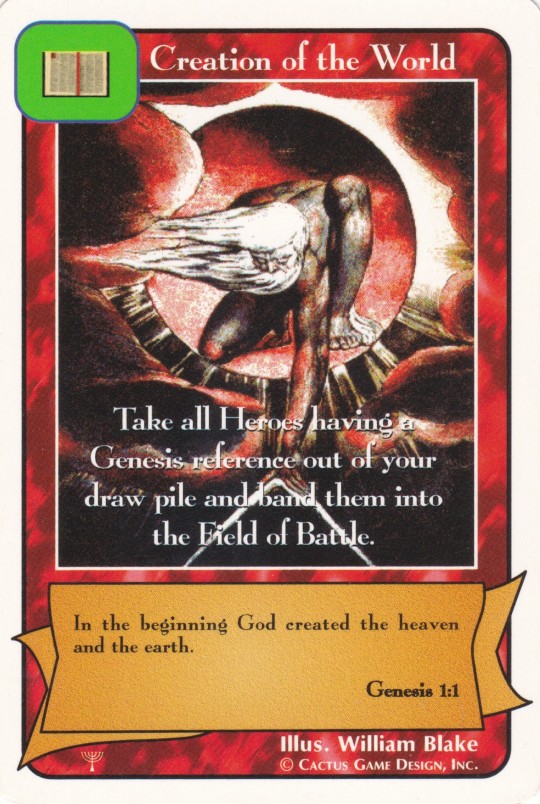
Creation of the World - Redemption
3 notes
·
View notes
Text

การสร้างโลกของพระเจ้า
การสร้างโลกของพระเจ้า

7 วันแห่งการทรงสร้าง ตามความเชื่อของศาสนาคริสต์

การสร้างโลกของพระเจ้า
youtube
youtube
คริสเตียน (คนที่นับถือศาสนาคริสต์) ทุกคนเชื่อว่าพระเจ้า (พระเยซู) ทรงสร้างโลก และสิ่งต่าง ๆ ที่มีอยู่ตามธรรมชาตินั้น ล้วนมาจากการทรงสร้างทั้งสิ้น
ในบทความนี้เราจะมาเปิดพระคัมภีร์ทางศาสนาคริสต์ ในบทปฐมกาลที่บอกเล่าเรื่องราวการทรงสร้างของพระเจ้ากันค่ะ
การเนรมิตสร้างโลกมนุษย์
ในวันแรก (วันจันทร์)
พระคัมภีร์ได้เขียนเอาไว้ว่า พระเจ้าทรงสร้างฟ้าสวรรค์ ซึ่งคำว่าฟ้าสวรรค์นั้น หมายถึงทุกสิ่งที่อยู่เหนือโลก อวกาศ และสร้างแผ่นดินคือ น้ำ ที่ปกคลุมไปด้วยความมืด ดังนั้นพระเจ้าจึงสร้างให้โลกใบนี้มีความสว่างด้วย และแยกความสว่างกับความมืดออกจากกัน จึงเกิดเป็น กลางวัน และกลางคืนนั่นเองค่ะ

พระเจ้าสร้างอวกาศ
วันที่สอง (วันอังคาร)
พระเจ้าได้สร้างท้องฟ้า โดยยกพื้นดินขึ้นแยกออกจากน้ำ และทำเขตกั้นระหว่างน้ำเหนือพื้นน้ำ และความชื้นในอากาศ ในโลกเราจึงมีท้องฟ้าที่กว้างใหญ่ และแม่น้ำต่าง ๆ พร้อมกับอากาศอันบริสุทธิ์นี้ค่ะ

พระเจ้าสร้างท้องฟ้า
วันที่สาม (วันพุธ)
พระเจ้าได้สร้างแผ่นดินแห้ง จนเกิดเป็นทวีป และเกาะที่อยู่เหนือน้ำที่เราเรียกว่า “ทะเล” นั่นเองค่ะ และในวันนี้พระองค์ยังทรงสร้างพืชที่มีชีวิตทั้งเล็กและใหญ่ขึ้นด้วย
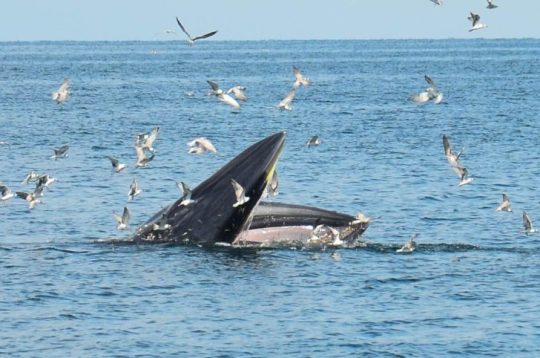
วันที่สี่ (วันพฤหัสบดี)
ในวันนี้พระเจ้าได้สร้างดวงดาว ดวงอาทิตย์ที่เป็นแหล่งแรกของแสงสว่าง และดวงจันทร์ซึ่งสะท้อนแสงจากดวงอาทิตย์ โดยทั้งสองสิ่งนี้พระเจ้าได้แยกวันออกจากคืน ทำให้เราสามารถกำหนดวัน และเวลาได้ค่ะ
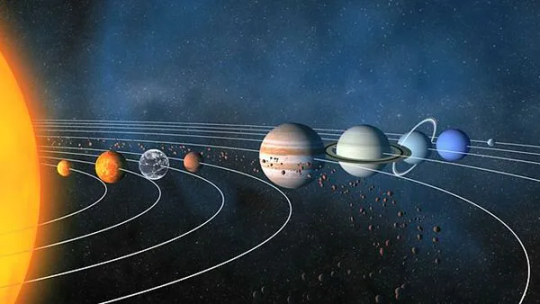
วันที่ห้า (วันศุกร์)
วันนี้พระองค์ได้สร้างสิ่งมีชีวิตทั้งหมดที่อยู่ในน้ำ และสร้างสัตว์ปีก พระเจ้าได้สร้างสัตว์ทะเลขนาดใหญ่ และสิ่งมีชีวิ��นานาชนิดให้แหวกว่ายอยู่ในน้ำเป็นฝูง ตามชนิดของพวกมัน และนกต่าง ๆ ตามชนิดของพวกมันเช่นกันค่ะ นอกจากนี้พระเจ้ายังให้การอวยพรแก่สัตว์เหล่านั้นว่า “จงมีลูกดกทวีมากขึ้น จนเต็มในทะเล และให้นกทวีมากขึ้นบนแผ่นดิน”
พระเจ้าสร้างชีวิต
วันที่หก (วันเสาร์)
พระเจ้าได้สร้างสัตว์บก และมนุษย์ตามพระฉายาของพระองค์ โดยการสร้างมนุษย์ผู้ชาย และผู้หญิง เพื่อให้ครอบครองฝูงปลาในทะเล ฝูงนกในอากาศ ฝูงสัตว์ และปกครองแผ่นดิน หรือที่เราอาจเคยได้ยินชื่อของพวกเขามาแล้วนั่นก็คือ อาดัม และอีฟนั่นเองค่ะ

วันที่เจ็ด (วันอาทิตย์)
ในวันนี้พระเจ้าไม่ได้ทรงสร้างสิ่งใดขึ้น แต่ให้วันนี้เป็นวันแห่งการพักผ่อน พระเจ้าจึงให้วันนี้นั้น เป็นวันบริสุทธิ์ศักสิทธิ์ค่ะ หรือเรียกง่าย ๆ ก็คือวันแห่งการพักสงบ ที่เราเห็นคริสเตียนไปโบสถ์กันในวันนี้ก็มาจากเหตุนี้นั่นเองค่ะ

และนี่ก็คือ 7 วันแห่งการทรงสร้างตามความเชื่อของศาสนาคริสต์ ที่เราได้นำข้อมูลมาแบ่งปันในบทความนี้ สำหรับท่านที่ไม่ได้เป็นคริสเตียนก็อาจจะฟังดูไม่น่าเชื่อใช่ไหมคะ แต่แน่นอนค่ะทุก��าสนาย่อมมีเรื่องที่ต้องใช้วิจารณญาณในการรับฟัง เพราะความเชื่อของคนเราไม่เหมือนกันอยู่แล้ว แต่สิ่งที่เหมือนกันก็คือ ทุกศาสนาต่างสอนในสิ่งที่ดีนั่นเอง

Creation of the World , การสร้างโลกของพระเจ้า , 7 วันแห่งการทรงสร้าง ตามความเชื่อของศาสนาคริสต์ , การสร้างโลก , ใครสร้างโลก , พระเจ้าสร้างฟ้าสวรรค์และโลก
ที่มา :: https://www.wreathnawat.com , https://prinkotakoon.blogspot.com/2024/10/creation-of-world.html
#Creation of the World#การสร้างโลกของพระเจ้า#7 วันแห่งการทรงสร้าง ตามความเชื่อของศาสนาคริสต์#Youtube#การสร้างโลก#ใครสร้างโลก#พระเจ้าสร้างฟ้าสวรรค์และโลก
2 notes
·
View notes
Text
Slavic myths about the creation of the world

The World Tree
The Slavic World Tree is an oak, a sacred tree that is incredibly important throughout Slavic mythology. At its roots is Nawia, the realm of the dead/underworld. Here, the god Weles (Veles) dwells. The trunk of the tree is Jawia, the realm of the living. And among the branches is Prawia, the realm of the gods, ruled by the thunder god, Perun.
It used to be at the beginning of the world –
Then there was no sky or earth,
No sky nor earth but the blue sea,
And in the middle of the sea on oak
Two pigeons were sitting.
Two pigeons on an oak tree
They held such a council,
Happy debated and cooed:
How can we create the world?
We will fall to the bottom of the sea,
We'll bring out the fine sand
Fine sand, blue stone.
We will sow fine sand,
We will pick up the blue pebble.
From fine sand - black earth,
- icey water, green grass.
From the blue stone - the blue sky,
Blue sky, bright sun,
Bright sun, bright moon,
bright moon and all the stars

Białobóg I Czarnobóg
In the beginning, there was nothing but the sky, the sea, the God (Białobóg) who sailed by boat and the devil (Czarnobóg) emerging from the sea foam, who sat down to God. The idea of creating the Earth was suggested to God by the devil, who could not do it by himself alone. The devil immersed himself and brought out a handful of sand from the bottom. God threw it on the water and created the beginning of the Earth so thin that they both barely fit on it. God and the devil inhabited the Earth, the devil thought to push the sleeping God into the water, but he contributed to the expansion of the land from the side of God, from the east and from his own side, from the west. Both creators started a dispute that ended up with God going to heaven and knocking down the devil, who also went there, by lightning into the abyss.

The Cosmic Egg
Rod created the magical golden egg. The crust broke and out of the egg left Svarog, Lada and Chernabog. Svarog married Lada and then fell asleep. During his dreams, he saw the entire world, the perfection of it, its beauty and he didn't want to wake up. His wife desperately wanted him to open his eyes again so she gave birth to everything he dreamt of. While she was doing that, Chernabog silently watched. He grew envious of Svarog's beautiful world to be and he sat out to destroy it. But then Svarog woke up and threw him away.
He then stood marveling the perfection of the world. He decided to come to the centre of the world where he found the white stone Alatir. He decided to turn it into his forge. He created more weapons to fight Chernabog if he was to return.
And, oh, he was. But now as a dragon with hundreds of heads and an iron tail. Svarog couldn't fight him alone so he forged more gods to help him. The first one was Dazhbog, the god of Sun. Then Stribog the god of wind. And finally, Semargl, the god - dog of fire.
Combined together, the powerful gods defeated dragon Chernabog and used him as a bull. Namely, Svarog forged a plow and the gods made Chernabog pull it. The large canyon he made was the border that separated the world. The world where gods live is Prav and the dark realm of Chernabog is Nav. The only thing that connects them is Kalinov bridge which will later be used by souls who passed away.
The gods decided to move up and live in the Sky. So they made Lada give birth to a magical Oak, the world tree. Oak's branches were holding the sky, its trunk became Yav, the visible world and its roots grew down to Nav enabling evil things to climb up to Earth and Heaven just to fight gods in desperate need to continue the mission of Chernabog.
#ancient gods#slavic#słowianie#słowianin#słowiaństwo#creation of the world#slavic creation myth#poganie#pogaństwo#pagan Poland#polish gods#slavic gods#polscy bogowie#słowiańscy bogowie#Polish pagan gods#pagan polytheism
2 notes
·
View notes
Text
The Bookkeeping of Kinds
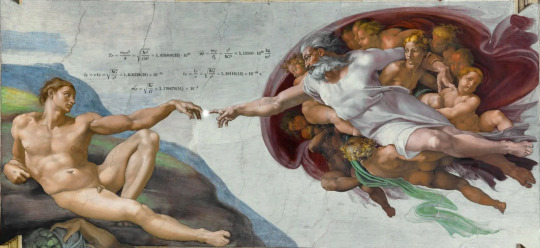
Day One The creation of light and its separation from darkness.
Day Two The creation of the firmament, separating the upper waters from the lower.
Day Three The creation of dry land and vegetation.
Day Four The creation of the sun, moon, and stars.
Day Five The creation of aquatic and flying creatures.
Day Six The creation of land animals and humans.
Day Seven Rest.
Day Five Trillion Four Hundred Forty-Three Billion Three Hundred Million The creation of God in the image of man.
2 notes
·
View notes
Text
I recorded a specific video, then turned it into video wallpaper.
All credits goes to original creator of this masterpiece - kopopgmcpr
https://sketchfab.com/3d-models/alternate-dimension-20f74892c16945bfb20c91d726a487ca
I just recorded the inside of this dimension, reworked some colors and added swirly effect similar to Obito's kamui.
#naruto#naruto shippuden#obito#obito uchiha#uchiha obito#tobi#tobi war#genjutsu#alternate dimension#creation of the world#kamui#video#video editing#video games#3d art#3d#3d model#kopopgmcpr
4 notes
·
View notes
Text

#this is inspired by a dream i had that i found quite poignant when applied to the real world#and it's hostility and slowly creeping illegality of simply existing in public space#and was a very fun activity using paint.net's 3d pane tool which i had totally forgotten was literally a base program tool#i also feel pretty proud of the “Our City Safe” slogan with it's implied hostility by saying it's OUR city#and we're keeping it safe from YOU#you being poor/homeless/lower class/minorities/not actively benefitting from capitalism people#i think it says a lot in very little words#my art#my creation#hostile architecture#anticapitalism#third space#street sign#iridescent
55K notes
·
View notes
Text
The Norse Cosmogony: From Ginnungagap to Ymir and the Birth of the Gods
Introduction
Norse mythology offers us a fascinating vision of the origin of the universe, a narrative rich in symbolism and profound cultural meanings. In a world where the struggle between order and chaos is constant, Norse myths tell us how the cosmos was created from the fusion of primordial elements and how the forces of destruction and rebirth are inextricably linked. This story explores the birth of the Norse universe, the importance of figures like Ymir and Audhumla, and the central role of Ragnarök, the twilight of the gods, in the cyclical nature of existence.
The Birth of Ymir and Audhumla
Before time began, the primordial abyss of Ginnungagap existed between two extreme realms: the icy Niflheim in the north and the fiery Muspelheim in the south. This empty space, Ginnungagap, represented the duality between creation and destruction, between chaos and order—a central theme in Norse cosmology. In the heart of Ginnungagap, fire and ice met, generating an extraordinary phenomenon. From this event, Ymir was born, the first of the frost giants, a colossal creature born from pure chaos, symbolizing primordial disorder.
Alongside Ymir, another fundamental being appeared: the sacred cow Audhumla, born from the fusion of the ice of Niflheim and the heat of Muspelheim. Audhumla is considered so important in Norse cosmology because she not only nourished Ymir, allowing him to survive, but also contributed to the creation of the first god, Buri, symbolizing the ability of primordial forces to generate life and order from chaos. Also born from the fusion of elements, Audhumla played a crucial role in nourishing Ymir with her abundant milk and revealing the first god, Buri, by licking the ice-covered rocks. This seemingly simple act symbolized the slow and gradual creation of the universe from primordial forces—a parallel to other creation myths, such as the Greek myth of Chaos, from which Gaia and other primordial elements emerged.
The Symbolism and Cultural Value of Audhumla
The figure of Audhumla is not only relevant to the creation of Ymir and Buri. Her ability to nourish and give life reflects the values of fertility and sustenance that were deeply rooted in Norse culture. In an era where survival depended on nature and sustenance, the symbol of the cow represented the indissoluble bond between humans and the natural environment. Moreover, the act of licking the ice to bring forth Buri has symbolic meaning related to the creation of order from chaos—a representation of the process of civilization and the origin of the gods who would shape the destiny of the world.
The Birth of Buri and the Creation of the World
With the birth of Buri, the Norse universe began to take shape. He is the ancestor of the Æsir gods, among whom the most famous is Odin, son of Borr. Odin, along with his brothers Vili and Vé, decided to create the world by sacrificing Ymir and using his body to shape the earth, the sky, and the sea. Descriptions of Norse cosmology emphasize the interconnectedness of all these elements. Ginnungagap, as the place of origin, represents the starting point of creation. The roots of the world tree, Yggdrasil, connect all nine worlds—Asgard (the abode of the gods), Midgard (the world of humans), Helheim (the realm of the dead), Jötunheim (the land of giants), Vanaheim (the home of the Vanir), Alfheim (the land of the light elves), Svartalfheim (the abode of the dark elves), Niflheim (the realm of ice), and Muspelheim (the realm of fire)—creating a universe where everything is intimately interconnected.
The Theme of Chaos and Order
This mythological story is more than just a narrative about the origins of the universe. It represents the ongoing struggle between chaos and order, a battle that will culminate in Ragnarök, an event laden with cultural significance for the Norse people, as it represents the inevitability of the cycle of destruction and rebirth. During Ragnarök, the forces of Muspelheim and Niflheim will converge once again on Ginnungagap to destroy and regenerate the world, thus emphasizing the cyclical and inevitable nature of existence. This event has deep importance in Norse culture, representing not only the end of the known world but also the hope for rebirth. The legend of Ragnarök has been revisited multiple times in folklore and modern literature, inspiring works such as epic sagas, fantasy novels, and even films, highlighting its enduring relevance in our collective imagination. Ginnungagap is not just the beginning of everything but also a symbol of an endless cycle—a concept reflected in the Norse view of time as an eternal cycle of destruction and rebirth.
The Balance of Forces
The Norse creation myth is thus a profound reflection on the balance between opposing forces. Audhumla and Ymir embody this dichotomy: nourishment and growth on one side, chaos and primordial force on the other. Their connection symbolizes the interconnectedness of all beings, divine and mortal, in a universe where the boundary between order and chaos is always thin and vulnerable. An example of this balance is manifested in the myth of Loki, a deity who represents both chaos and the need for change. Loki often causes turmoil among the gods, but at the same time, his actions lead to new solutions and transformations, highlighting how chaos can be an integral part of cosmic order. This story invites us to consider not only the origin of life but also its fragile beauty and the inevitable return of chaos, which always lurks at the edges of the order established by the gods.
Conclusion
The Norse creation story, with its profound symbolism and interplay of opposing forces, continues to fascinate. Ginnungagap, Ymir, and Audhumla represent not only elements of myth but also archetypes of the struggles and balances that characterize life itself. Recognizing the importance of these stories allows us to reflect on the origins of the universe and the dynamics that still influence the world today and our understanding of it. Have we ever wondered how these ancient struggles between order and chaos might still mirror the challenges of our daily existence?
youtube
#Asgard#Audhumla#Creation of the World#Ginnungagap#Loki#Muspelheim#Myths and Legends#Niflheim#Nordic History#Nordic Legends#Norse Cosmogony#Norse Giants#Norse Gods#Norse Mythology#Norse Myths#Odin#Ragnarok#Thor#Viking Mythology#Ymir#birth of giants#norse paganism#ymir - heartsick#youtube#mythology#fantasy#videos#folklore#atrumvox#Youtube
1 note
·
View note
Text
i keep thinking about how rfk said that autistic people "will never write a poem." i keep thinking about that, about if humanity is calculated on the back of old verse. how far we measure personhood is in baseball and stanza breaks.
i keep thinking - i have over 7k poems on here alone. language can be a special interest, after all. did you know the word autism comes almost direct from the greek word autos, meaning "self"? self-ism.
maybe he is right - i haven't really played baseball. i was a ballet dancer instead. and besides - my sister once accidentally hit me in the face with an aluminum bat. i'm not sure if the injury gives me half points. am i only a person in the dugout? hand in a mitt? swinging?
does softball count? does cricket? am i a person if i throw the ball to my dog. am i a person as long as the ball is in the air, or do i stop being a person as it rolls into the bushes. i took my girlfriend to fenway recently; was i a person in the sun, with my hands up, with the game laid out at my feet in a diamond. i felt like a person, but that was back in the summer, and i often feel my most person-like then.
am i more of a person because of the sheer number of things i've written? does quality matter, or is it quantity? i used to write entire books every summer in high school - i wasn't doing well. i felt the least like-a-person back then. but then - does any person feel human in high school?
in the library, ink on my skin, i feel personhood shutter at the edges of myself. actually, writing feels blissfully like not being myself. it feels birdlike; escaping into creation so my body dissolves and i survive only by muscle memory. i am not there, i am writing.
but who can deny the falconlike focus of warsan shire, the tenderness of mary oliver, the sheer skill of amanda gorman. those are poets. they are certainly human. you could line them up with the way their words have influenced us and measure their literary shadows like wings.
perhaps it was very assumptive of me to want to be a poet rather than "a [ label ] poet." i wanted the work to fill itself in, rather than be stained by what i am. i do not write in despite of my neurodivergence, i am just neurodivergent and writing.
does the poem have to be in english or can i send it through my palms into the coat of my dog. does the poem have to make sense. does the poem have to love you back.
if i break a glass, will the poem appear naturally? or is the act of breaking the glass human-enough. the shards of my life glittering out beneath me - do i have to write the poem, or is it self-evident in the pile of glass splinters? i cannot grasp this world the way other people can. regardless, i endeavor to touch - even the mess - very gently.
i broke my toenail against my coffee table recently. i released a bug outdoors. i made coffee. i walked my dog.
i didn't write a poem about any of these things.
something else, then. existing without humanity.
#how many poems would one have to write to walk through the gates of their own humanity#so it is just writing and not a miracle.#as if writing is ever anything except miracle - all creation is divine.#writeblr#poetry#i am almost certain i have written more poetry than most members of the presidential cabinet#so maybe i am MORE human?#... but alas.#perhaps BECAUSE i'm a poet- i do not like the idea of measuring my own humanity against theirs#they are people. many terrible people are unfortunately still people.#i know i cannot touch this world in the same way other people can.#but i still.... i lay down in the glass shards#i let it into my hair.#i don't like talking about this part of me and i rarely write poems about it.#it is sharp here. i thought that you liked how sharp it is for me. you've been running your hands through the blood#when it was painful enough.... even YOU might have called it poetry
4K notes
·
View notes
Text
Marina Volkova and Sergey Kuzmin
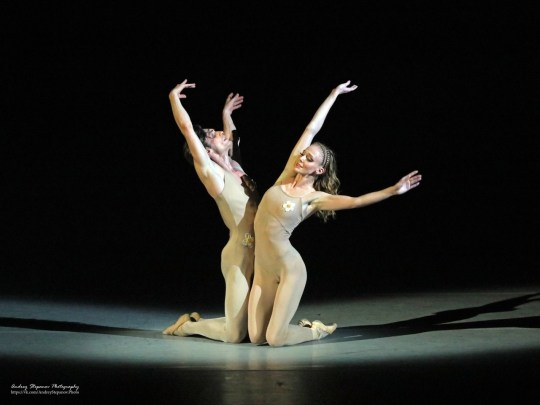
Marina Volkova Марина Волкова as “Eve” and Sergey Kuzmin Сергей Кузьмин as “Adam”, “Creation of the World Сотворение мира”, music by Andrey Petrov Андрей Петров, libretto and choreo by Natalia Kasatkina Наталия Касаткина and Vladimir Vasiliev Владимир Василёв, set and costumes design by Iosif Sumbatashvili იოსებ სუმბათაშვილი, Moscow Classical Ballet Theatre Natalia Kasatkina and Vladimir Vasiliev Театр Kлассического балета Наталия Касаткина и Владимир Василёв. As part of the program of the Classical Ballet Theatre Festival In Memory of Natalia Kasatkina, Bolshoi Theatre’s New Stage, Moscow, Russia (July 23, 2024).
Source and more info at: Photographer Andrey Stepanov on Telegram Photographer Andrey Stepanov on Facebook Photographer Andrey Stepanov on Facebook (page) Photographer Andrey Stepanov on Instagram Photographer Andrey Stepanov on VKontakte Photographer Andrey Stepanov on Speaking Planet Photographer Andrey Stepanov on Dozado Dance Magazine
Note I: This blog is open to receiving and considering any suggestions, contributions, and/or criticisms that may help correct mistakes or improve its content. Comments are available to any visitor.
Note II: Original quality of photographs might be affected by compression algorithm of the website where they are hosted.
Note III: Some links leading to the English version do not work or contain incomplete information. For this reason, they are published in their original version. You always have the option to translate the page using the right-click on your mouse.
#Adam#Andrey Petrov Андрей Петров#Andrey Stepanov Андрей Степанов#Bolshoi Ballet Большой театр#Classical Ballet Theatre Festival In Memory of Natalia Kasatkina#Creation of the World#Сотворение мира#Eve#Iosif Sumbatashvili იოსებ სუმბათაშვილი#Marina Volkova Марина Волкова#Moscow Classical Ballet Theatre Театр классического балета Наталии Касаткиной и Владимира Василева#Natalia Kasatkina Наталия Касаткина#Russian Ballet#Sergey Kuzmin Сергей Кузьмин#Vladimir Vasiliev Владимир Василёв#Dans#Danse#Dance#Danza#Dancer#Dansen#Balet#Ballet#Балет#Ballett#Balletto#Balerino#Balerina#Ballerina#Ballerino
2 notes
·
View notes
Text
The creation of the world did not happen 'in the beginning,' it happens from day to day.
from In Search of Lost Time, Book 6: The Fugitive by Marcel Proust
#in search of lost time#the fugitive#marcel proust#proust#creation#creation of the world#the world#in the beginning#day to day#day by day
1 note
·
View note
